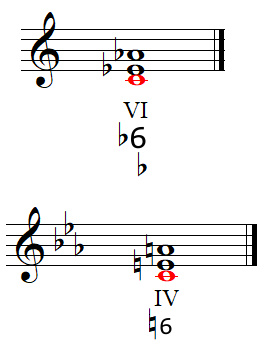To begin with labeling chords, you had to learn some theoretical notions:
- Scales degrees
- Triad notion
- Root, root position and inversions
Below is a quick summary about these theoretical notions about chords:
Scales degrees (summary)
Scales degrees are explained in the article Scales, please read this before.
Scale degrees of C major scale:

The names of the Scale Degrees are:
I : Tonic
II : Supertonic
III : Mediant
IV : Subdominant
V : Dominant
VI : Submediant
VII : Leading Tone or subtonic
Triad notion (summary)
A triad is a set of three music notes that are been stacked vertically in thirds.
Example of a triad:
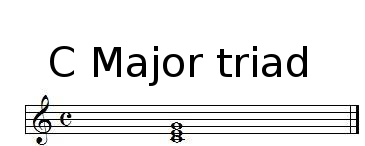
From low to high, the notes of the triad are called:
* The root
* The third (a third above the root)
* The fifth (a fifth above the root
Root, root position and inversions (summary)
Root of the chord is the lowest note (pitch) of the chord when the notes of the chord are been stacked vertically in thirds.
Root position is the position of a chord when notes of the chord are been stacked vertically in thirds.
* Root position of the chord occur when the lowest note is the root
* First inversion of the chord occur when the lowest note is the third
* Second inversion of the chord occur when the lowest note is the fifth
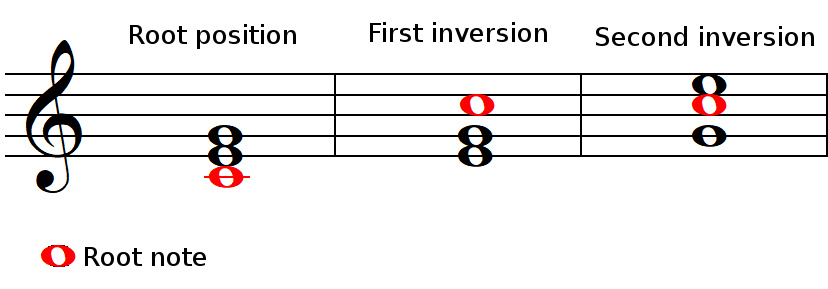
Finding scale degrees
First example in C major
Here, we will learn how to find scale degrees in a music score.
Here is our examples for which we will find the degrees of chords:
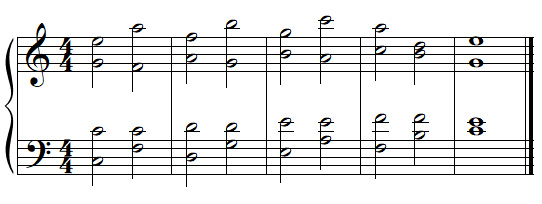
First step, move all the chords in root position:
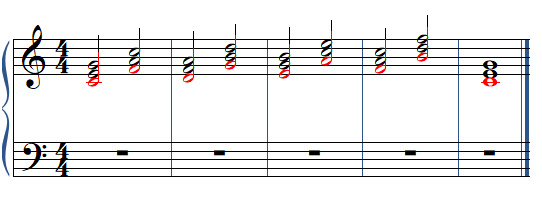
Roots of chords are written in red.
Second step, labeling chords with roman numbers to notice the degrees of chords:
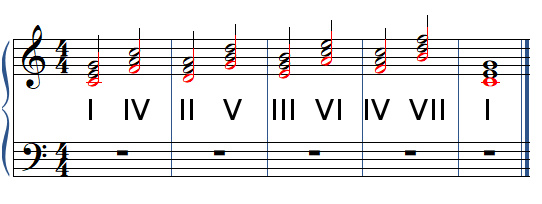
The key is C major scale, so C is I, D is II, E is III, ....
Final result is:

Second example in F major
Here is a more complicated example in F Major:
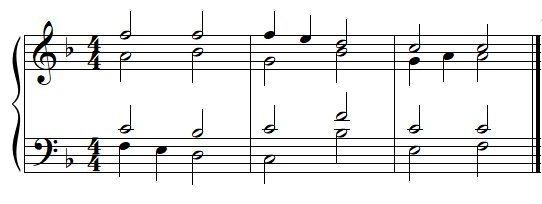
First step, find the key:
The key signature has 1 sharp, so the key is F Major, and the scale degrees of F Major are:
I : F
II : G
III : A
IV : B♭
V : C
VI : D
VII : E
Second step, identify ornaments (notes that are not in the principal chord):

Third step, remove ornaments and move all the chords in root position:
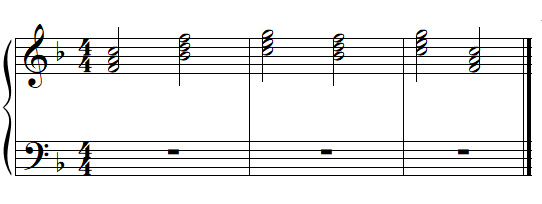
Fourth step, labeling chords with roman numbers to notice the degrees of chords:
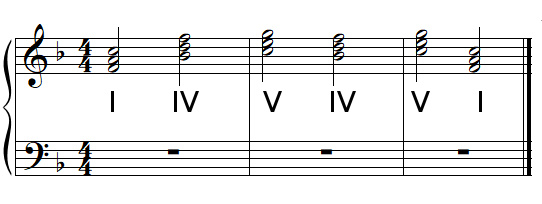
Final result is:
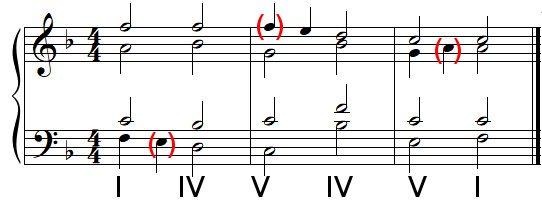
Alternatives notations of scale degrees
Sometimes, you will find alternative notations of scale degrees, but I really hate these notations:
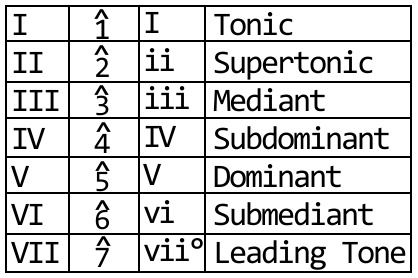
Figured bass
Figured bass (or thoroughbass) is a numeric notation system that indicates intervals in the chords.
Convention:
- A thoroughbass figure indicates the simple intervals from the root
- Compound intervals (an octave or larger) are reduced to their simple interval equivalent.
- The intervals are represented as Arabic numerals
Finding the thoroughbass figure of a chord:
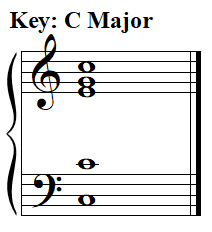
It is our example
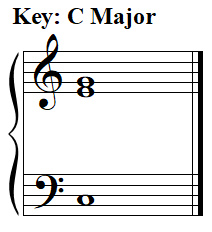
Step #1: make simple the compound interval
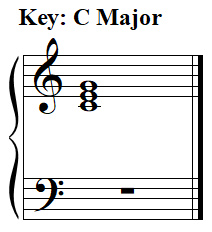
Step #2: Move the chord on its root position
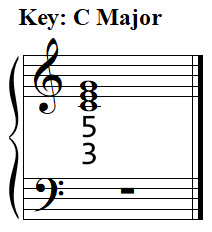
Step #3: Find the intervals from the root. 3 is the third and 5 is the fifth
Figured bass, triad symbols
Below are all figures for triads:
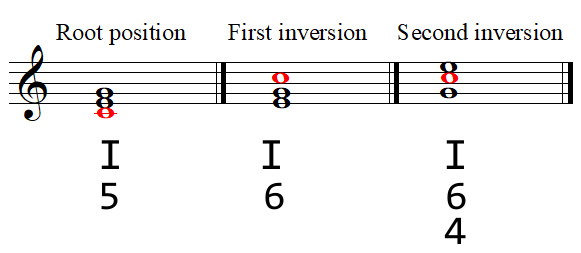
Another convention: There are shortcuts for triads symbols.




Figured bass, seventh chord symbols
It depends, but most of the time a difference is made between seventh chord and dominant seventh chord.
A seventh chord is chord composed of a triad and a note forming the interval of a seventh above the chord’s root.
A dominant seventh chord is a seventh chord based on the degree V (dominant degree)

Dominant seventh chord
Below are dominant seventh chord symbols:











(non dominant) seventh chord
Below are non dominant seventh chord symbols, also named seventh chords:

Other symbols
Accidentals
Accidentals are also indicated, examples:
